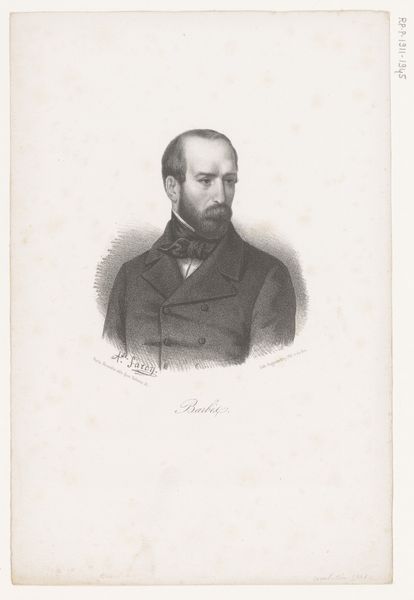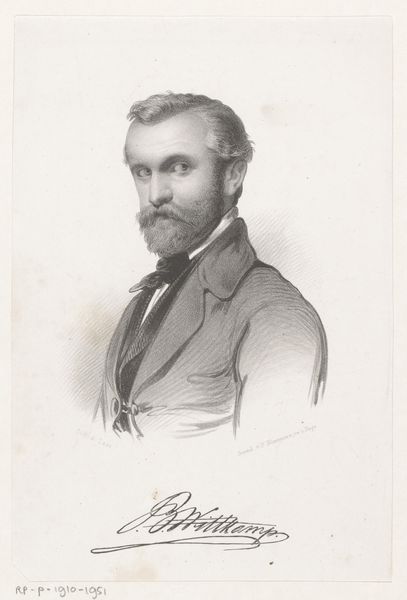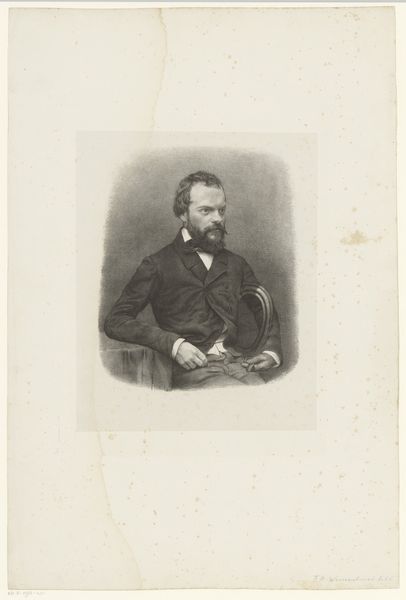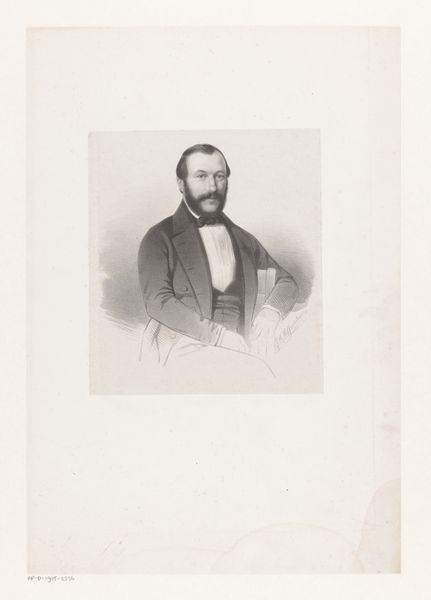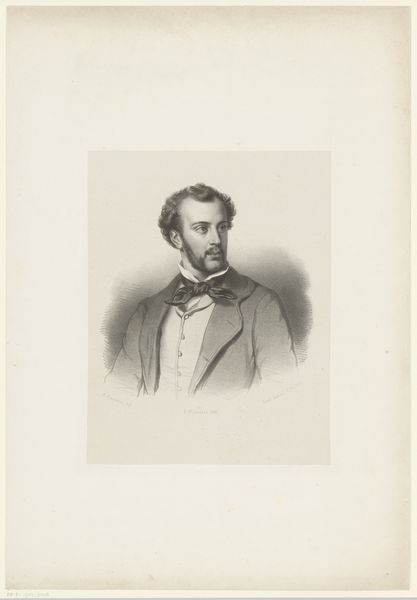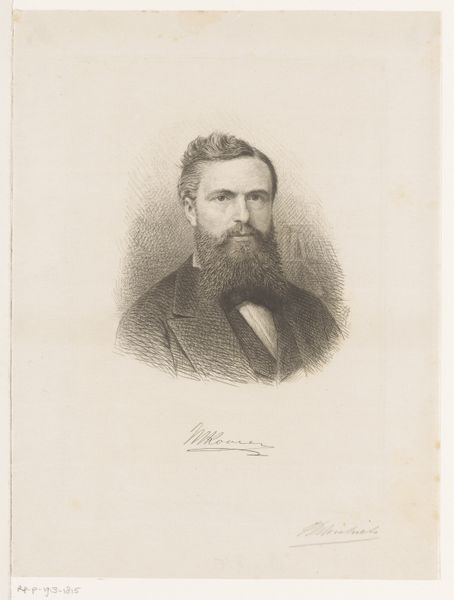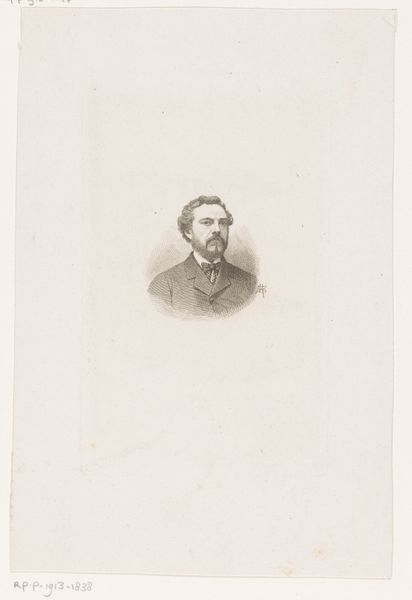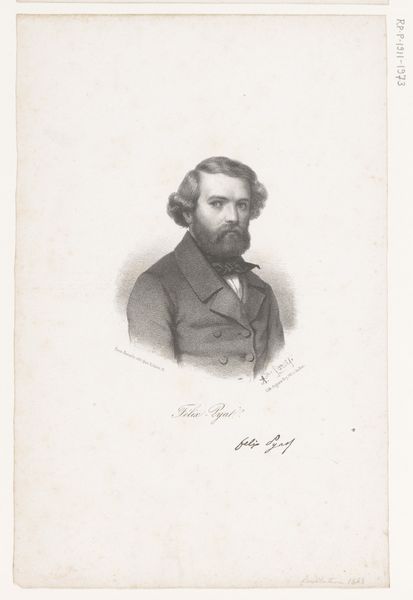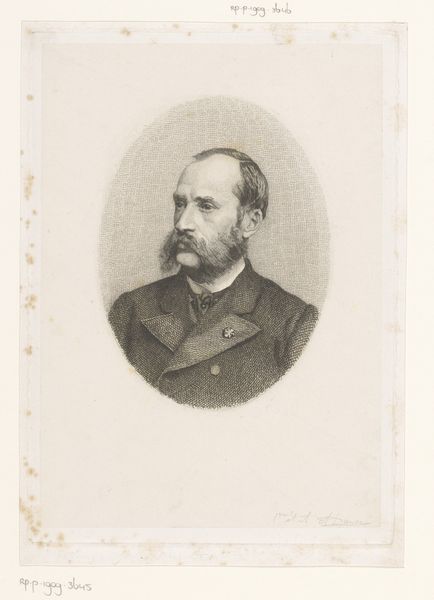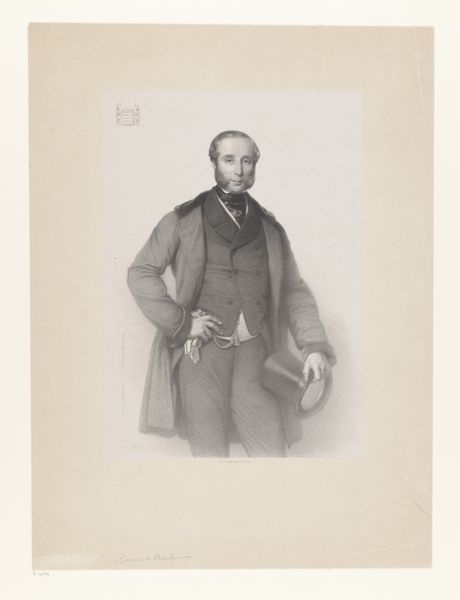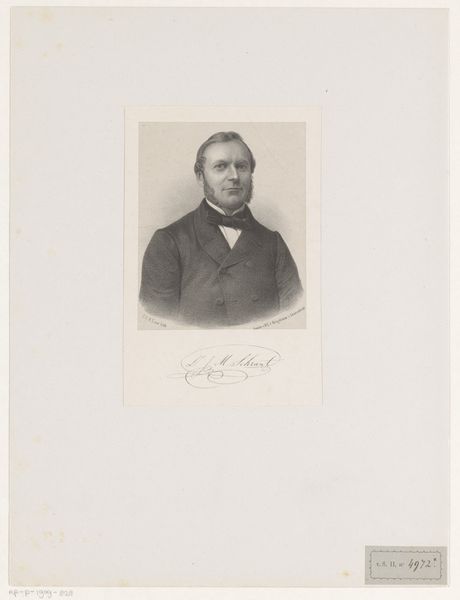
engraving
#
portrait
#
old engraving style
#
figuration
#
portrait reference
#
pencil drawing
#
romanticism
#
line
#
history-painting
#
engraving
#
realism
Dimensions: height 273 mm, width 181 mm
Copyright: Rijks Museum: Open Domain
Editor: This is Alphonse Farcy’s "Portret van Auguste Blanqui," created in 1849, using engraving. The first thing that strikes me is his gaze. It’s intense and penetrating, yet seems softened, as if tempered by sadness or reflection. How do you interpret this work? Curator: It is fascinating how images from periods of great upheaval often reflect a collective yearning for stability and order through the careful construction of identity. Look at how Blanqui's portrait conforms to visual cues recognizable even today as intelligence and seriousness. Does the use of engraving here contribute to this effect? Editor: I see what you mean. Engraving has this inherently meticulous and almost documentary feel, right? But why this emphasis on a "serious" identity at such a tumultuous time? Curator: Well, remember Blanqui was a revolutionary. To garner support, one needs to project trustworthiness, defiance perhaps, but within acceptable visual parameters. The crossed arms—a universal signal of thoughtful composure—the carefully maintained beard and hair, these are all signifiers strategically deployed. But look deeper, what does the quality of the line-work convey? Editor: The precise lines, maybe a sense of control? But also, perhaps a vulnerability, since every line is so deliberate, leaving little room to obscure imperfections? Curator: Precisely! And there's where we see the artist negotiate between the visual requirements for depicting a public figure, a revolutionary, and revealing some trace of inner life. How interesting, don’t you think? Editor: Absolutely, thinking about the intentional crafting of imagery to negotiate social and political expectations really shifts my understanding of portraiture! Curator: Indeed, the image becomes a cultural mirror, showing not only Blanqui but also the complex hopes and anxieties of 1849.
Comments
No comments
Be the first to comment and join the conversation on the ultimate creative platform.
